How do electronic casino games work
New casino sites to play real money
Modern computers can adjust those odds using a weighting system. Another symbol might be programmed to come up half the time, so your chances of hitting that symbol might be as low as ½ X ½ X ½, or 1/6. If that pays out at 2 to 1, the casino still makes a significant profit, but the player feels like she’s winning on a pretty regular basis.
How slot machines & coin slots work
Slot machines are the most popular games in any casino, but a lot of people don’t have a clear understanding of how they work. In fact, some people have an out-and-out misunderstanding of how they work, while others are more than willing to take advantage of the gambling public’s ignorance in such matters. See our page about slot machine myths for about what we think of those people.
The purpose of this page is to explain in some detail how a slot machine actually works. Once you have an understanding of the actual inner workings of the game, you might find yourself less (or more) attracted to this type of game, depending on your temperament. Slots can be a lot of fun, but they’re extraordinarily profitable for the casino for several reasons, not least of which is how they actually operate.
Are online slots rigged? If online slots were rigged, then you can guarantee that almost all of them would be closed down by now. It’s one of the biggest concerns people have when playing online, and it’s why we only recommend reputable casinos here at VSO. The top gaming jurisdictions such as UK, malta and gibraltar ensure that fair and secure gaming requirements are in place, and this gives each person the same percentage chance of winning.
Return to player (RTP) is the factor that decides how much the slot pays out. If the slot has an RTP of 96%, then for every $100 that is gambled, the slot will payout out $96. This is regulated and independently tested to make sure you have a safe environment to play it.
We want all of our readers to make the right decisions when it comes to playing games online, so follow our recommendations and eliminate any risk of encountering rigged slots.
Slot machines use a random number generator. Early slot machines were mechanical (think coin slots), but they still used a random number generator, in the same sense that a roulette wheel, a deck of cards, or a pair of dice are also random number generators. Modern slot machines use a computer to generate random numbers, and these determine the outcomes of the game.
The important thing to remember is that the results are truly random. The game doesn’t work on any kind of cyclical basis, and slot machine jackpots don’t become due. Slots don’t get hot or cold, either. They only seem to, and only then in retrospect. It’s not something you can predict, any more than you can predict with any degree of certainty what the next card will be when dealing a deck of cards.
The casino does have an edge over the player. This is true of every casino game, in fact. The casino gets its edge using math and large numbers. Every bet on every casino game offers a lower payout than the actual odds of winning.
For example, in roulette, the odds of hitting a specific number are 37 to 1. But a bet on a specific number only pays off at 35 to 1. It doesn’t take a genius to figure out how the casino makes its profit in that situation, does it?
Slot machines work the same way.
Slots usually have three reels but sometimes also have five reels. The reel is the image that spins in the front of the machine. It has multiple symbols on it, and if you line up certain combinations of symbols, you win money. The less likely it is to line up a particular set of symbols, the higher the payout on that particular combination.
For decades, these reels were literally large metal hoops, but now that slot machines are powered by computers, they’re more often just images on a video screen. Even in the case of slot machines with actual reels, the outcome is determined by the random number generator inside the computer.
Where those reels stop are called, naturally, “stops”. Reels can stop on a symbol or on a blank space between those symbols. On early slot machine games, each symbol would have an equal chance of coming up, but now that computers are running the show, the odds can be convoluted. You might have a cherry on a reel that comes up on average once every 50 spins, while an orange might come up on average once every 5 spins, or any other combination you can think of.
Early slot machines might have only had 10 stops per reel, but now it’s common to have between 30 and 50 stops per reel. The more stops you have on a reel, the easier it is to offer really large jackpots. For example, if you have a game with 10 stops on each reel, with an equal chance of landing on each stop, then your chances of winning any particular combination are 1/10 X 1/10 X 1/10, or 1/1000. If you have a payout larger than 1000 units, you’re losing money on that game.
Modern computers can adjust those odds using a weighting system.
The weighting is what determines how likely a particular stop is to be picked. Suppose you have a slot machine game with 10 symbols, but one of those symbols is special and only comes up once every 100 spins. The odds of getting 3 of that symbol are 1/100 X 1/100 X 1/100, or 1/1,000,000. You could theoretically offer a payout of $1 million on that combination and still break even over the long run. Casinos love that kind of action, and so do players.
Another symbol might be programmed to come up half the time, so your chances of hitting that symbol might be as low as ½ X ½ X ½, or 1/6. If that pays out at 2 to 1, the casino still makes a significant profit, but the player feels like she’s winning on a pretty regular basis.
The par sheet determines the odds. Every modern slot machine is designed with a par sheet which specifies the weightings for each stop on the reel, including the blanks. That par sheet makes the odds and the house edge for a slot machine game a known quantity—for the casino. Gambling companies keep these par sheets under wraps, though, so players never really get a clear idea of what the odds, the house edge, or the payback percentage is.
One final term you should understand is “payback percentage”. This is a mathematical prediction of how much money the machine will “pay back” over an infinite number of spins. For example, if a machine is programmed to have a 97% payback, over enough spins, the average should come close to winning $3 out of every $100 put into the machine. Casinos distinguish between the theoretical payback percentage and the actual return on the machine, but you can count on one thing. Slots are immensely profitable for the casinos.
How video slots work
There are many myths and misconceptions when it comes to how video slots work. In fact we would go as far as to say they are in fact the most misunderstood of all of the casino games. In this section we present you with the facts and dispel the fiction.
Please note that the odds calculations below are just examples and in no way relate to a specific brand or machine. They are listed purely to illustrate the idea of how the odds are calculated.
Introduction
The first point to note is that all slot machines including video slots are a pure game of chance. There is nothing that you as a player can do to alter the outcome. The games are run by computer programs which ensure that over time the casino will always win. Of course over the short term you may win or lose.
There is so much misinformation regarding how they work that we deiced to give you the inside scoop straight from the inside of a major slot manufacturer. We hope that after reading this you have a better understanding of video slots.
How the combinations are decided
When you press the spin button the machine shows all the reels spinning, in reality the outcome has already been decided. The stop position and resulting symbols for each reel is randomly decided by the random number generator independently from the others. Once the reels stop spinning you can see the result, either a win or a loss.
How the odds work
Video slot machines can have anywhere from 20 to 100 symbols on each virtual reel. Of course the higher paying symbols will appear less than the lower paying ones.
For example if we have a game with 40 stops per reel and the jackpot symbol occurs only once per reel then the odds of hitting the highest prize is 1 in 102.4M.
As with most video slots you can play more than one line at a time so the example above would be 1 in 5,120,000 if you were playing 20 lines at once.
Through extensive mathematical testing the slot machine manufacturers can see how their reel placement will control the overall pay out percentage of the game.
About random outcomes
Every spin you make on a video slot is in no way related or effected by the last. Each spin has exactly the same odds of winning.
It is quite possible although unlikely that you could hit the top jackpot two spins in a row. For this reason it does not matter if you play a game that has just paid out or a game that has not paid out for a week.
Another point worth noting is that the symbols positions on the virtual reels never change. They a permanently placed to ensure the correct payout percentage.
There are a lot of systems for sale that claim to be able to beat slot machines. They are all useless, there is no way to predict or beat a randomly generated outcome.
Comparison of 3 reel slots and 5 reel slots
Three reel and five reel slots are quite different in several aspects. The most obvious is the difference in reel numbers and the spinning reel versus video screen format. Other major features that are different include the number of lines and the reel weighting.
Video slots do not need to use reel or symbol weighting as the odds can be determined by the amount of symbols on the reels. Three reel slots have a limited number of symbols per reel so they have to have weighted reels to have any chance of working for the casinos.
It is a very common misconception that spinning three reel slots have much better odds that video slots. This would be true if the reels were not weighted. In reality the odds are very close to the same when you compare a wide selection of games. In the end it really comes down to what entertains you the most. In our opinion video slot machines win this hands down.
Are slot machines honest?

One of the most common questions you’ll see about anything in the casino gambling industry relates to “honesty”. You’ll see this question asked about every casino game under the sun. You’ll also see it asked about every casino, especially the online gambling sites.
In this post, I want to address this specific question:
How do you define honest?
When I use google to look for a definition of honesty, I see some of the following definitions listed:
- “free of deceit and untruthfulness”
- “sincere”
- “morally correct or virtuous”
- “fairly earned, through hard work”
I think most people are thinking of the first definition when they ask whether slots games are honest. They want to make sure they’re not being cheated. In this context, the answer is yes, slot machines are honest. I’ll explain why in detail in the rest of this post.
In the second context, where “honest” means “sincere”—I’m less sure. Are the casinos sincere when they want you to think you’re able to win money? I think so, but they know in the long run, anyone who plays slots long enough will lose all their money.
In the third and fourth contexts, I’d have to say that slot machines are NOT honest. Slot machines are closer to morally neutral than they are to sinful, but you might have a different belief system about such things. It’s hard to say that slots don’t appeal to one of the seven deadly sins, though (greed).
I’m not sure anyone could (or would) consider money won on a slot machine “earned” or to have anything to do with “hard work”. It’s a game of luck. If you win, then you got lucky—it has nothing to do with working hard or being smart.
I’ll explain more about that later in this post, too.
How a slot machine works mathematically
Answering the question “are slot machines honest?” begins with learning how the games work mathematically. The math behind the games is easier to understand than most people probably think.
The first concept to understand is basic probability. When someone says “probability”, they’re talking about the mathematical likelihood that something is going to happen. That “something” is called an event.
The probability of an event is always represented as a number between 0 and 1. An event that will always occur no matter what has a probability of 1. An event that will never occur has a probability of 0. An event that will occur half the time has a probability of 0.5.
For simplicity’s sake, and to make understanding the concept easier, I just used whole numbers and decimals in the previous paragraph. But probabilities are almost always expressed as percentages or fractions.
How to express probability as a percentage
You’re watching the evening news, and the meteorologist says there’s a 50% chance of rain tomorrow.
That means it’s just about as likely to rain as it is to not rain.
You flip a coin. You have a 50% chance of it landing on heads. You also have a 50% chance of it landing on tails.
If you add the probabilities of all possible events together, you always get a total of 1 (or 100%).
Probability is the mathematical engine that makes gambling games possible.
How to calculate a probability
Here’s how you calculate a probability:
You take the number of ways an event can happen. You divide that by all the total events possible (including what can happen and what happens if it doesn’t.)
You’re rolling a single six-sided die. You want to know the probability of getting a 6.
There are 6 possible outcomes. Only one of them is a 6.
The probability of getting a 6 is 1/6.
Another way to express that is using odds, which can be useful when calculating whether a bet is expected to be mathematically profitable or not.
Odds expresses the number of ways something can’t happen versus the number of ways it can happen.
In the six-sided die example, the odds of getting a 6 are 5 to 1. You have 5 ways of NOT rolling a 1, and only 1 way of rolling a 1.
If you want to calculate a probability that includes the word “or”, you add the probabilities of the events together.
If you want to calculate a probability that includes the word “and”, you multiply the probabilities by each other.
You want to know the probability of getting a 1 or a 2 on a roll of a six-sided die. The probability of each is 1/6.
You can reduce that to 1/3.
You roll 2 dice. You want to know the probability of getting a 6 on both dice. The probability of each is 1/6.
Applying probability to a simple hypothetical slot machine game
But how does all this apply to the honesty of slot machines?
I’ll use a super simple hypothetical slot machine game to explain how this probability affects the integrity of the game.
This super simple game has 3 symbols on each reel—an orange, a lemon, and a cherry.
The probability of getting a lemon on the first reel is 1/3.
The probability of getting a lemon on the second reel is also 1/3.
In fact, it’s the same on each reel.
But the game only pays off if you get 3 of the same symbol on each reel.
The probability of that is 1/3 X 1/3 X 1/3, or 1/9.
Let’s suppose the payoff for getting 3 lemons is 4 for 1.
And let’s suppose the payoff for getting 3 cherries is 3 for 1.
Finally, we’ll suppose the payoff for getting 3 oranges is even money.
- The probability of winning 4 coins is 1/9.
- The probability of winning 3 coins is also 1/9.
- The probability of winning 1 coin is also 1/9.
- The probability of winning nothing is 6/9, or 2/3.
Now let’s suppose you’re putting $1 in on every spin, and you play 9 spins, getting every possible result once.
You win 4 coins once. You win 3 coins once. You win 1 coin once. That’s a total of 8 coins you’ve won.
But you’ve inserted 9 coins into the game.
Where did the extra coin go?
In the pockets of the casino, that’s where.
By setting up the payoffs so that they’re lower than the odds of winning, the casino sets up a situation where it’s guaranteed a mathematical profit over the long run.
Of course, most modern slot machines aren’t quite this simple. They have more symbols on each reel, for one thing. For another, the probability of getting a particular symbol might be different from the probability of getting another symbol.
For example, you might have a 2/3 probability of getting a pear, and only a 1/24 probability of getting a cherry.
What happens in the long run vs. The short term?
By manipulating the payoffs and the probabilities of the symbols, the casino can guarantee that over a long period and many spins, they’ll profit.
But in the short run, a player might win a big jackpot or lose several times in a row.
That’s the nature of random events. In the short run, anything can happen. In the long run, the numbers get closer to the theoretical probability.
This is obvious when you look at it with an extreme example.
On an infinite number of spins, your average loss per spin will mirror the mathematical expectation.
The closer you get to an infinite number of spins, the closer you’ll get to the mathematical expectation.
Do slot machines cheat?
The casinos don’t need to cheat to make a healthy profit.
The slot machine designers and manufacturers don’t need to cheat to make a healthy profit.
In fact, in well-regulated jurisdictions (like nevada), games are thoroughly audited for fairness. When they’re auditing a game for fairness, one of the things they check is whether a game has a jackpot that’s impossible to win.
That’s the main concern many players have when they ask if slot machines cheat.
Does the game have jackpots that are impossible to win?
The short answer in almost every case is no, they don’t.
But you have no way of knowing what the probability of winning that jackpot is. Slot machine games have opaque odds and probabilities. The results are generated by a computer program called a random number generator (RNG).
The only people who know the exact settings for that RNG are the designers and the casino managers.
In fact, you could be playing two identical slot machines located right next to each on the casino floor and have different odds of winning. Not only is this legal, it’s common.
Does that sound like cheating?
By the strict letter of the law, it’s not.
I’d say yes. Having two games next to each other offering different odds is intentionally misleading. It’s legal, but it’s not sincere in any way.
Online slot machines are no different, except that in some cases, these games HAVE been known to cheat. But not reputable casinos and not reputable software providers.
They set up games which are impossible to win.
The reasons baffle me. You stand to make far more money in the long run if you offer an honest game.
Even an idiot can tell after a while that he’s never going to win a rigged casino game on the internet.
But otherwise smart people will continue to deposit money and wager it at a breakneck pace if they’re winning something every now and then, even if they’re showing a net loss over time.
What about video poker games?
You need to understand immediately that video poker games are NOT the same thing as slot machine games. They look similar on the surface, but the math and the gameplay couldn’t be more different. And the philosophy behind these games is different, too.
A video poker machine uses a random number generator that duplicates the odds found in a 52-card deck of cards. You know the probability of getting a specific symbol. Any specific card has a 1/52 probability of appearing.
A card of a specific suit has a ¼ probability of appearing. A card of a specific rank has a 1/13 probability of appearing.
Payback percentages and the house edge
Knowing this enables mathematicians and computer programs to calculate the actual payback percentage for these games.
What’s a payback percentage?
It’s the percentage of each bet that’s paid back to the player on average in the long run. It’s the opposite of the house edge.
On a slot machine, you have no way of calculating a game’s payback percentage. It’s impossible, because you have no way of knowing the probability of getting a specific symbol.
But on a video poker game, you can calculate all the possibilities. And since you know how much the game pays out for various combinations, you can add the expected value of each to get an overall payback percentage for the game.
And you know what’s even better than this?
The payback percentages for video poker games are significantly higher than the payback percentages on slot machines in almost every case.
Even the worst video poker game usually has a payback percentage of 95% or so. But the better games offer payback percentages in the 98%+ range. Some (rare) games have pay tables which offer a slightly positive game for the player, like 100.2%. But those numbers assume perfect strategy on your part.
But even the best slot machine games usually have a payback percentage in the 95% range. The more common games slip down into the lower 92% or so range.
Expected hourly loss rates in slot machine games vs. Video poker games
What does this mean to your bankroll?
Let’s look at how much money you can mathematically expect to lose playing 2 different games:
We’ll start with an average slot machine game with a 94% payback percentage. You’re playing for $1 per spin, and you’re making 600 spins per hour. You expect to win 94% of each bet back, which means you expect to lose 6% of each bet.
6% of $600 is $36, which is the amount the casino expects you to lose on this game on average over time.
Then we’ll consider a 9/6 jacks or better game which you’re playing with perfect strategy. The payback percentage for this game is 99.54%, which means the house edge is 0.46%.
We’ll assume you’re playing a quarter machine and betting 5 coins per hand. You’re putting a little more money into action on each bet–$1.25. Most video poker players are as fast as slot machine players; they play 600 hands per hour. That’s $750/hour in action.
But with a house edge of 0.54%, your expected loss on that kind of action is only $3.77.
That’s right.
Playing slots costs you 10 times as much as playing video poker.
Video poker offers other advantages over slots, too. One of these is the skill element. You might not want to think about what you’re doing when you’re gambling.
But if you’re anything like me, you want to be able to at least exert a little bit of control over your destiny.
In video poker, you get to do that. The decisions you make playing each hand have a direct effect on your bottom line.
Play your hands well, and you’ll be playing one of the best gambling games in the house.
Should you play slot machines at all?
This is a legitimate question. Should you play slot machines at all?
Here are some pros and cons of playing slots:
- You can win bigger jackpots on slot machine games than any other gambling game except maybe keno. If you’re looking for a life-changing jackpot, like you’d see if you won a lotto drawing, slots are the way to go.
- They require little in the way of attention or effort on the part of the player. This suits some temperaments just fine. Relaxing in front of the spinning reels seems like a good deal for a lot of people.
- They’re available in an endless variety. You can find a slot machine game with any theme you can imagine. Love elvis presley? You’ll find a slot machine for it. Play dungeons & dragons when you were 12? There’s a slot for that, too. The themes and games are almost endless.
- They offer some of the worst odds in the house. The house edge for slot machines vary widely. Some of them might offer good odds, but most of them have a house edge of between 5% and 10%. This isn’t awful. After all, roulette has a house edge of 5.26%. The problem is that slots play so fast that you can easily put more money into an action than you thought you could.
- You can’t figure out what the odds are. I have a philosophical problem with slot machine games. No other casino game is opaque about your odds. You can calculate the house edge for any table game in the casino. You can calculate it for video poker, too. But you’re never given the information you need to figure out the house edge on a slot machine. This is unacceptable to me.
- They’re designed to be addictive. Slot machine manufacturers spend millions doing research into what kinds of stimuli are going to put most people into the “flow” state. Flow is great if you’re interested in personal productivity at work, but if you’re playing a gambling game, it’s awful. No other casino game is as addictive as a slot machine.
Conclusion
Yes, slot machines are honest—in a manner of speaking, anyway. Casinos don’t make claims about slot machines that are blatantly untrue. If a game has a maximum jackpot of $1 million, you do have a chance of winning that much money.
What you don’t know is how likely or unlikely it is to win that amount.
Is this disingenuous on the part of the casinos?
I think it is, at least to some extent.
But all casino games have math behind them that puts the odds in the casino’s favor. That’s just the nature of the games. Slots are no different in that respect.
No matter which casino game you play, if you stick with it long enough, you’ll eventually lose all your money.
The only exceptions are certain games that can be played with advantage techniques, but that’s another subject entirely.
The only way for you to get an edge against a slot machine game is to cheat.
In most jurisdictions, cheating is blatantly illegal. You’re better off learning to play poker at an expert level, or learning how to count cards in blackjack.

Michael stevens has been researching and writing topics involving the gambling industry for well over a decade now and is considered an expert on all things casino and sports betting. Michael has been writing for gamblingsites.Org since early 2016. .
Michael stevens has been researching and writing topics involving the gambling industry fo .
How slot machines work
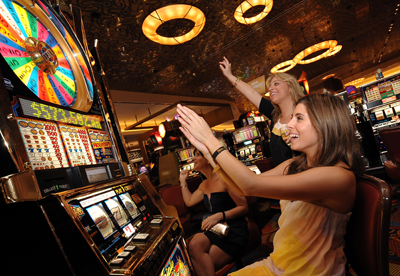
Originally, casinos installed slot machines as a diversion for casual gamers. Unlike traditional table games (such as blackjack or craps), slot machines don't require any gambling knowledge, and anyone can get in the game with a very small bet.
This idea proved to be a monstrous success -- slot machines eventually moved off the sidelines to become the most popular and the most profitable game in town, bringing in more than 60 percent of the annual gaming profits in the united states.
The technology of slot machines has also changed a lot over the years. The classic mechanical designs have been almost completely replaced by computer-controlled machines. But the game has remained the same. The player pulls a handle to rotate a series of reels (typically three) that have pictures printed on them. Winning or losing is determined by which pictures line up with the pay line, a line in the middle of a viewing window. If each reel shows the same winning picture along the pay line, you win (certain single images are sometimes winners as well). The amount you win -- the payout -- depends on which pictures land along the pay line.
In this article, we'll find out what sets the reels in motion in modern slot machines as well as in the old mechanical models. We'll also see what determines the odds of winning on a slot machine and look at some popular variations on the traditional game.
The classic slot machine design works on an elaborate configuration of gears and levers. The central element is a metal shaft, which supports the reels. This shaft is connected to a handle mechanism that gets things moving. A braking system brings the spinning reels to a stop, and sensors communicate the position of the reels to the payout system. A coin detector initially registers that a coin has been inserted and unlocks a brake so the handle can move.
There are any number of ways to arrange these elements, and manufacturers have tried dozens of approaches over the years, so we'll focus on one representative design. The basic design includes three reels mounted on a central shaft. The central shaft also supports three notched discs, which are connected to the three reels. A second shaft below the central shaft supports a kicker, a piece of metal comprising three paddles. The kicker paddles are lined up so they can push against the notches on the three discs. The second shaft also supports a series of connected stoppers, teeth that lock into the notches on the discs.
The kicker and the stoppers are both connected to springs, which hold them in a standby position. The kicker is held in place behind the discs, while the stoppers are held up against the discs, locking them into place.
When you pull the handle on a slot machine, these parts do a lot of work. We'll look at exactly what happens in the next section.
Electronic airball roulette: fair or fake?
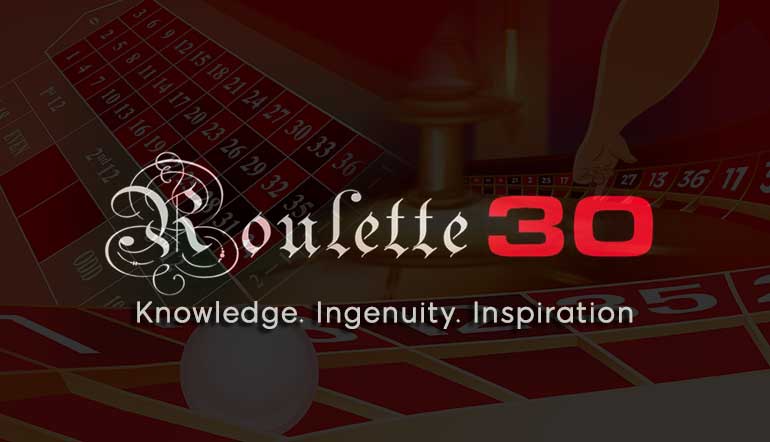

A matter of confidence
The issue of fairness of the game is not new. It was and is always there, across all types of roulette wheels. From physical wheels that are found to use electromagnets or be biased to less than random random number generators of online casinos. This is exactly the reason, that recently the concept of provably fair games gains traction and popularity in the gambling community. On the physical wheels front, cammegh has developed an innovative roulette wheel construction made out of glass, in order for the player to be able to see “inside” and have more confidence in the game.
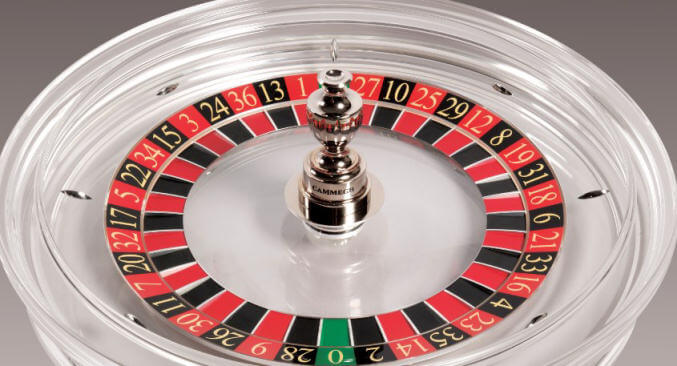 |
| Transparent wheel made of glass |
Players worldwide have been questioning the fairness of the relatively recently introduced automated roulette machines, otherwise known as airball or rapid roulette or even more broadly called electronic roulette. Many heated debates in different online roulette communities over the last years didn’t provide a conclusive answer. Typically, manufacturers in the industry are not transparent on how its games operate and one would need to own a machine to disclose it’s secrets. We will try to give some answers.
Who makes this stuff?
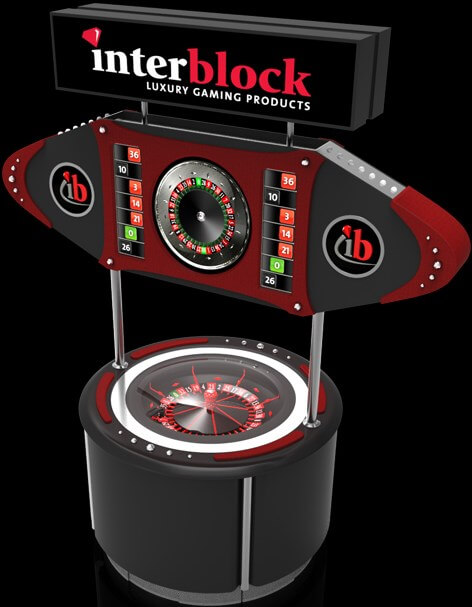
Air-ball roulette systems, often produced in the east-european country of slovenia, came to the gambling venues in the late nineties. Known brands in the industry are interblock/elektroncek, alfastreet, gold club, spintec, igt and novomatic. For those, unfamiliar with the game: the setup typically consists of an electric rotor powered roulette wheel covered by a glass dome. The ball is launched by being blown out of the pocket by a puff of air. A number of player consoles are strategically placed around the wheel and punters would place their bets using touch-screens until ‘no more bets’ is called. All wins or losses are calculated electronically. The interval of independent spins is typically set between 60 and 90 seconds, assuring a steady game flow. The automated game links to the casino’s central monitoring system for the state to accurately tax the winnings.
How do they work?
To answer the question what they really are, it might be helpful to scrutinize some of the patents related to this subject. Through the eyes of the gambler, these machines may look like a regular roulette with the difference that the dealer is absent. One would think that the mechanical number distribution would be completely random and determined by the laws of physics. However, this understandable assumption cannot always stand hold. I discovered the following, when taking a closer look at an online patent from the latest generation automated roulette machines, uspatent US 20140015194 A1:
Before the wheel is spun, or after the wheel has begun to spin, a random number generator selects a random outcome of a roulette game event outcome.
For the true roulette lover, this quote might be quite shocking. I started having serious doubts about the fairness of my local air-ball machine when noticing a great difference in patterns while observing the automated roulette machine, versus actively wagering s for real money. It even gets more unsettling, just let sink in the following quote:
The deceleration should be smooth so as to avoid the appearance of control over the wheel which a player might consider as a fraudulent control.
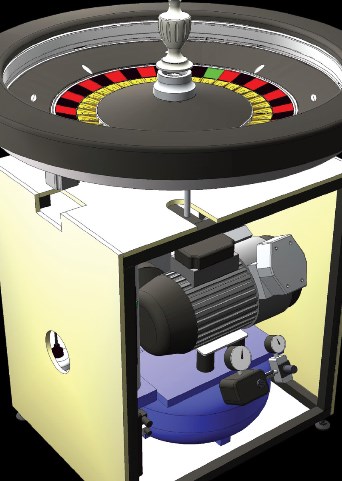
On my local rapid roulette, I clocked various values, ranging from 12 pockets per second to 17 pockets per second (p/ps) at first ball rotation. After ‘no more bets’ is called, there are another 10 ball rotations when ball and wheel speed are decelerating until the final drop. Unnatural variance of p/ps is not visible to the eye but does take place in order to line up with the pocket or sector selected by the RNG, in advance. It is important to know that air-ball machines, even the same model and manufacturer, could have different game setups and software versions, hence the values presented herein are not representative for other electronic roulette models.
The roulette game depicted in this patent is different from a conventional roulette wheel: in example, the track and the alphanumeric remain stable (do not rotate) during actual play of a game event. To outline all differences is beyond the scope of this article. However, an important paragraph from this patent is worth noting:
published US patent application documents nos. 20020090988; 20040116177; 20070026930; and 20080113706 describe roulette table systems having terminal wagering systems and this technology can be used in combination with the present novel technology.
Fair game?
This last statement underlines that present technology as described in this patent is downwards compatible with older air-ball roulette machines that are set up with the conventional roulette wheels.
It’s not easy to tell if your local airball roulette is a true random spun device or an ordinary slot machine in disguise. Many (rather thick) deflectors with little space left in between, only one or two dominant drops, very little scatter of the ball and frequent hits next to your wagered numbers, are all indicators that should raise suspicion. Elaborate and empirical testing would be required for each and any individual air-ball roulette machine, to come to definite conclusions.
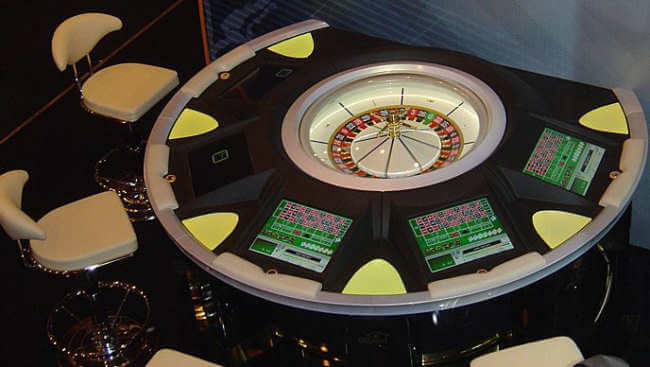 |
| Gold club electronic roulette |
Taken into account these quotes, one must be wary that some automated roulette models are able to chose number outcomes before or during ball launch and determined by a random number generator (RNG). This might explain why these airball machines are classified as egms (electronic gaming devices) by different international gaming boards: the same class as slot machines, poker machines and RNG games.
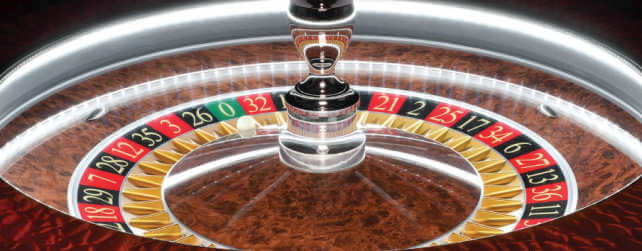 |
| Cammegh slingshot 2 model |
I believe it would be fair if casino patrons were informed about the true nature of air-ball roulette games; that the winning numbers are determined by RNG and not by law of physics. In my opinion, the casino industry has crossed a line when it comes to offering a supposedly ‘fair’ game for its clientele. Manipulating outcomes through deceleration of the wheel, ‘so smooth as to avoid the appearance of control over the wheel’, is downright cheating.
The mercury 360 RSS
Players beware that conventional looking roulette wheels with a live dealer could make use of RNG electronically controlled rotors such as the cammegh mercury RSS. We read on the companys brochure:
Designed for the online gaming sector, the mercury 360 RRS (random rotor speed) incorporates an innovative mechanism to randomly and imperceptibly adjust the speed of the rotor at ‘no more bets’. This feature dramatically increases the wheel’s unpredictability and provides an extra layer of security against rotor ‘clocking’, whilst also boosting productivity by allowing ‘no more bets’ to be safely called later on in the game.
I have captured my personal quest about beating air-ball roulette with the help of advantage play (AP) techniques in the following video:
How to play bingo
How to play electronic bingo
Is "computers-plus-bingo" a winning combination? With electronic bingo machines, you can keep track of more cards than you thought humanly possible. But electronic bingo isn't the best option for everyone. Before you ditch the paper cards, this article will review the basics of what you should know about electronic bingo. Below are some options to consider if you want to play this traditional game with updated technology.
Handheld bingo devices
computers are changing the way we do everything -- even playing bingo in bingo halls. In the past few years, more and more bingo enthusiasts have been ditching paper cards. Instead, they are using handheld, portable electronic bingo devices that allow them to play dozens of cards at the same time with a minimum amount of effort. Many players find electronic bingo minders permit them to double, or even triple, the number of cards they can play. In some halls, as many as 20 percent of players are using these electronic bingo devices.
| Do electronic players have an edge? Electronic bingo is controversial. For years, traditional bingo players have enjoyed the ritual of daubing the paper card. They live for the challenge of matching wits with fellow players while keeping pace with the caller. Some think relying on a machine takes the skill out of bingo, reducing it to a contest of who can spend the most money to buy cards. So who really wins here? Does an electronic bingo player with 66 cards have a greater chance of winning? Having more cards gives you a slight edge, but not that much. A player with 200 cards will have an advantage over players with only a dozen cards, but, when 20 other people in the hall also have 200 cards, the advantage is no longer significant. (besides, players who regularly play 200 cards at once would also have to regularly pay for 200 cards at once, which could have a disastrous effect on the wallet.) |
The best part about handheld bingo devices is that they usually have a tracking mechanism so players will never miss a bingo, even if they are playing dozens of cards. The end result is that novice players can track as many cards as experienced players without a problem. Also, players with physical disabilities might be able to enjoy bingo for the first time using one of these devices.
Players using these devices simply sit at the table, listen for the caller to call the next number, then punch the corresponding keys on the machine. The computer automatically scans the player's bingo cards to see if the player has that number. If one of the cards gets a bingo, it's up to the player to alert the caller by yelling "bingo," and show that he or she has the winning card face.
Many different types of bingo computers exist. Power player, one of the more advanced systems, features a full-color screen showing up to 12 cards at a time, sound effects, and a small onscreen character (lil' champ) who keeps track of the game. Some handheld computers can hold up to 200 cards per game, though certain halls may regulate the number of cards that can be played at one time.
Most jurisdictions have a limit (in texas, for example, no more than 66 card faces per machine are permitted in any single game). This limit probably stems in part from bingo hall owners' fear that traditional card players will stop coming if the players with the machines start winning all the time.
Video bingo machines
Another high-tech form of bingo is the video bingo machine, which is similar to a stand-alone video poker or video slot machine. While these machines aren't widespread across the united states, video bingo can be a fun, even productive, way for people to pass the time while waiting for traditional bingo games to start.
Each game of video bingo costs at least a quarter but usually no more than a dollar. The payout of these machines is typically 80 to 90 percent. In other words, for every dollar put in, the machine returns 80 to 90 cents in winnings. Prizes run up to $1,000, depending on how much money is wagered. To claim winnings, the player pushes the onscreen "cash out" button, and the machine prints out a ticket that can be redeemed for cash.
Video bingo machines sometimes are linked with machines in other places. Evergreen is one game that is commonly linked to more than one machine. The object in evergreen is to get four corners on an electronic bingo card of the player's choosing (cards can be changed before each round begins). Balls from B-1 to O-75 are randomly picked by the computer and displayed on screen. Players whose card shows the number have three seconds to hit the "daub" button.
If two or more players get four corners at the same time, the pot is split. A large progressive jackpot is available for any player who gets four corners in the first four balls.
Keno is a grid game that is often lumped in (perhaps unfairly) with bingo. Keno has its roots in china, and it was chinese immigrants who introduced the game to the united states at the end of the 19th century.
In the modern electronic keno game, players pick a few numbers (from 1 to 80) on a card and insert that card into a computer, which prints out a ticket showing their chosen numbers. Then, the computer selects numbers at random. Players win prizes based on how many of their picks match the computer selections.
Bingo players looking for ways to spice up the traditional game can find some relief with electronic bingo. Which technology they choose depends on how they want to enhance the game.
HOW TO WIN AT SLOTS
Slot machines are games with odds based in math, just like all other casino games. But few players understand just how those odds work, and whether they can do anything to improve their odds.
- Slots machine results are as random as humans can program a computer to be.
- Odds of the game are set so the house will have an edge
- Except in rare cases, slot machines are not games of strategy
The objective of this chapter is to introduce you to how slot machine odds work and what that means to your chance to win.

HOW THE HOUSE GETS ITS EDGE IN SLOTS MACHINES
Casino games make money for the house by paying less than the true odds of winning the bet. On table games, that can be relatively simple. At double zero roulette, for example with numbers 1 through 36 plus 0 and 00, the true roulette odds against any specific number are 37-1, but the house pays single-number winners only 35-1.
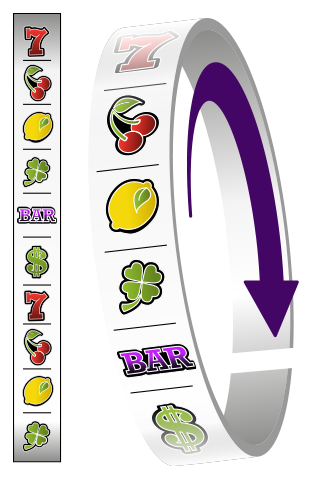
HOW MANY POSSIBLE OUTCOMES?
Slot machine odds work in a similar fashion to the roulette example, except there are many more possibilities on the slots. There are thousands, and sometimes millions, of reel combinations. There also is an open field for game designers to assign how much each winning combination pays. The number of winning combinations and the payoffs per winner work together to determine a game’s odds.
The sheer number of possibilities makes the math that goes into slot machine odds more complicated than on table games.
- On early three-reel slots with 10 symbols per reel, there were 1,000 possible combinations (10 x 10 x 10).
- If blank spaces between lines are used as stops, the number of combinations increases to 20x20x20, or 8,000.
- With bigger reels holding 20 symbols and 20 spaces, combinations increase to 40x40x40, or 64,000.
The change to virtual reels enabled programmers to make the reels to behave as if they had any number of stops. With 100 stops on each of three reels, there are 1 million combinations. The megabucks three-reel slot that paid the world record jackpot of more than $39 million has about 50 million combinations. Most modern video slots have five video reels can be as long as the gamemaker needs them to be. With 100 symbols on each of five reels, there are 10 billion combinations.

A SIMPLIFIED SLOT
To see how slots pay less than true odds to give the house an edge, let’s set up an example that’s as streamlined as slot odds can get, a game of the type used in the early decades after charles fey invented the three-reel slot machine in 1895. A hypothetical three-reel slot game with one 7, two bars, three cherries and four watermelons per reel would have 1,000 possible combinations and return 83.2 percent to players with this pay table.
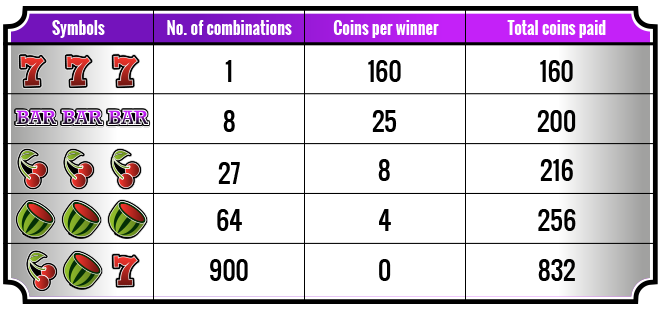

IN OUR SAMPLE GAME:
- Each of three reels has 10 symbols. Each reel has one 7 – that’s the top jackpot symbol.
- Each reel also has two bars, three cherries and four watermelons.
- There are 1,000 possible three-reel combinations – 10 symbols times 10 symbols times 10 symbols.
- Only one combination – or 1 x 1 x 1 – will be three 7s.
- Eight combinations will be three bars, 27 will be three cherries and 64 will be three watermelons.
- 900 of the 1,000 combinations mix different symbols.
If the game paid at true odds, then the payoffs would be set up so that each 1,000 coins wagered would bring 1,000 coins in payoffs. One way to do that would be to have payoffs of 170 coins on three 7s, 30 on three bars, 10 on three cherries and 5 on three watermelons. But the casino must have an edge, or it couldn’t pay the bills and offer the game. So instead it pays 160 on three 7s, 25 on three bars, 8 on three cherries and 4 on three watermelons. Multiplied by the frequency of wins, those payoffs total 832 coins. By paying less than the true odds of the game, the machine has a payback percentage of 83.2 percent, or a little less than today’s 1- cent games.

SLOTS TODAY
Modern slot machine or online slots odds work in much the same way, except that the math is more complex for several reasons:
- Random number generators work from much larger number sets, leading to exponentially greater possibilities.
- Many more than four reel symbols are actually used.
- Most modern slots have more paylines than the one line in the sample slot above.
- Game programmers have to account for the effect of bonus events.
SLOTS EXAMPLES AND EXPLANATIONS
In the classic WMS gaming video slot super jackpot party, there are eight reel symbols that form winning combinations, plus the noisemaker and party guy symbols that launch a bonus event. All of the symbols need to be assigned sets of random numbers, and payoff values assigned to three-, four- and five of a kind winners. That makes calculations much more complex than in our example game above.
The number of paylines also complicates the math. Even if there’s only one jackpot symbol on each reel, a 30-line game means there are 30 chances to line up those symbols in a winning combination, instead of just one. So it goes for every possible combination – programmers have to account for each combination 30 times.
As for bonus events, nearly all modern slot machines have events in which regular play stops, and with no further wagers, you get a spin of a bonus wheel, a pick’em event, free spins or some other extra. Bonus event payoffs have to be included in the calculation of the game’s overall return.
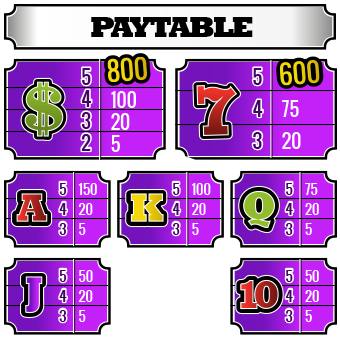

OUTSIDE LOOKING IN
We can’t see the random numbers being generated, and it’s those numbers that really determine whether we win. In fact, there’s a list of things we can and can’t see that are important to our chance of winning.
- We can’t see the odds of the game.
- We can’t tell if one machine is higher paying than another.
- We can see a machine’s pay table, and that gives us a clue to volatility.
- We can see what kinds of bonuses are offered, and that also is a volatility clue.
Casinos don’t post payback percentages on individual games, and there’s no way for a player to calculate the odds since all the random number details are regarded as proprietary and not revealed. Even on different machines with the same game, we don’t know if the paybacks are the same. Game manufacturers make several versions of the same game available to casino operators, and each version has its own payback percentage. Two machines can look identical, but have different payback percentages.
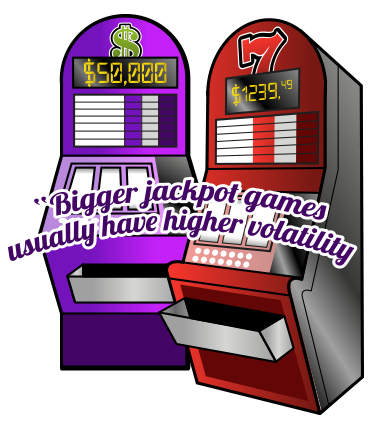
However, a machine with a large top jackpot gives back less on smaller wins than a game with a smaller top prize, and that means the big jackpot games usually are more volatile. That’s not always the case – the big jackpot can be rare enough that the game still has a normal percentage of lower payoffs, but it’s a starting point.
In addition, games with free spin bonuses are more volatile than games with pick’em bonuses. Volatility matters in choosing what you want out of a game. Are you the type of player who wants to maximize chances at a really big win and are willing to accept that fast, bankroll-eating losses are part o f the game? Then you want a high-volatility game.
Would you rather have a game that gives frequent small wins and extends your playing time, but rarely pays big? Then you want a low-volatility game. But regardless of whether the game you choose has high volatility, low volatility or something in between, you can be sure the house has taken an edge with payouts that are less than the true odds of winning your bet.

- Casinos have an edge on slot machines because winners are paid less than true odds.
- Slot odds are mathematically complex because of the number of possible outcomes and the different paybacks per winner.
- You can’t look at a slot game and tell the odds. In fact, two identical-looking games can have different odds.
- Looking at a machine can give you a clue as it its volatility, and that can help in choosing a game.

HOW SLOTS CAN BE BOTH PROGRAMMED AND RANDOM
When a casino buys a slot machine from a manufacturer, it can choose from a variety of targeted payback percentages. The manufacturer might make the same game available in 87-, 89-, 91- and 93-percent versions, and it’s up to the operator to choose which works best in game mix and for its competitive position.
That the games have targeted payback percentages in their programming leads to misconceptions from players. A common theme in my email over the last 20 years has been, “how can games be both programmed and random? The programming must keep them on track for the percentage.”
The short answer is that slots are programmed for a target percentage in the same way table games are: odds of the game are set so they will naturally lead to an expected payback percentage.

A TABLE ANALOGY
Let’s use roulette as an example, because the math is uncomplicated.
- A double-zero roulette wheel has 38 numbers – 0, 00 and 1 through 36.
- The odds against any specific number coming up on any spin are 37-1.
- The casino pays only 35-1 on any winning single number.
- The two-unit difference between 37-1 odds and 35-1 payoffs is kept by the house.
- Divide that two-unit difference by 38 possibilities and you get 0.0526, for a 5.26- percent house edge.
In that way, roulette is “programmed” so that in the course of thousands of wagers, the house will keep 5.26 percent. Results can be random. The same number can turn up three or four or five times in a row. But over time, the odds of the game lead to that percent-edge.
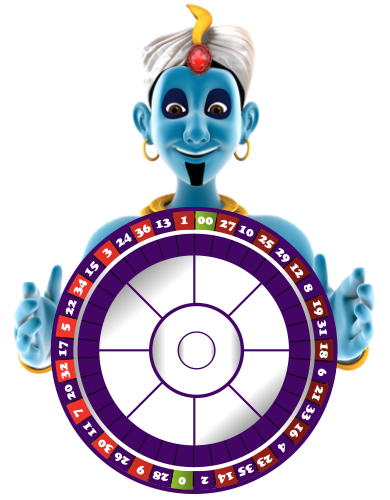
SLOT “WHEELS”
What if instead of reels with symbols and results driven by a random number generator, we set up a slot-like game with slot-like payoffs by using a series of roulette-like wheels?
- Let’s say we line up three roulette-type wheels, each marked into 100 segments.
- We mark each segment with a slot symbol. Each wheel gets one 7, five bars, 10 cherries and so on.
- We have a dealer spin and drop a ball on each wheel.
- The total number of three-wheel combinations is 100x100x100, or 1 million.

That’s the same number of possible combinations you’d get on a slot machine if the random number generator was working with sets 100 numbers for each reel.
From there, it’s easy to calculate the number of possible combinations that have the ball landing in the same symbol on each wheel. For the 7, since there is only one on each wheel, it’s 1x1x1 – there is only one three-7s combination. For bars, it’s 5x5x5, or 125 out of the million total combinations. For cherries, it’s 10x10x10, or 1,000 three-cherry combos.
Note that we’re not using computer software here. We’re using physical equipment, but it’s giving us the equivalent of “programmed” combinations and odds. That’s just how the odds work on modernized computerized slot machines. They don’t force a game to pay an exact percentage, they just let the normal odds of the game drive long-term results to an expected percentage, the same way table games do.
PROGRAMMED VS. RANDOM, FAQ
The notion that slots are both programmed and random can be difficult to fathom. Confusion over slot programming has jammed my email box for years. Here are some of the questions readers ask most often.
A. “random results” is not the same as saying “equal results.” A game doesn’t have to be programmed so that a jackpot symbol shows up as often as a blank space, or a bonus symbol as often as a cherry.
The odds of the game are set so that blank spaces will show up more often than winning symbols and small winners will show up more often than big winners. On three-reel slots, that will lead to there being more losing spins than winners, and on five-reel video games it will lead to more “wins” for amounts less than the size of your bet than bigger winners. The programmer sets the odds of the game, and then lets random chance take its course.
A. Streaks are a normal part of the probability of the game. Let’s take a three-reel game with a 12% hit frequency -- you’ll have a winner an average of once per 8.333 spins. On your first spin, there’s an 88% chance it’ll be a loser. There’s a 77% chance you’ll lose two in a row, 68% chance you’ll lose three in a row, and so on.
At 20 in a row, there’s still a 7.8% chance of every spin being a loser. That’s easily within normal probability. Anyone playing a machine with a 12% hit frequency for very long will have streaks of 20 or more losses.
A. Your choices do make a difference in pick’em-style bonus events, but not in any way you can predict or control. The programmer knows that over a very long time, the bonus even will yield an average payback.
Let's make up a simple slots bonus event, in which you pick one of three symbols to reveal a bonus award. If you touch one symbol, you get 25 credits, if you touch a different one, you get 50, and if you touch the other you get 75. You don’t know which symbol hides each award, so your results are random. However, over a very long time, you’ll get each award about a third of the time, so will average 50 credits.
The programmer can build that average into calculations for the payback percentage. You have a random result contributing to odds that drive paybacks into a long- term average – the same as on the reel-spinning part of the slot game, and the same way table games work.

- Slot machines have targeted payback percentages built into their programming, but results are random.
- Programmed percentages on the slots work in the same way as percentages on the tables – the odds of the game lead to expected returns.
- Random results are not the same as equal results. Odds are set so big winners turn up less often than other combinations.

BEATABLE SLOT MACHINES
With some rare exceptions, las vegas-style slot machines with random number generators are not designed to be tests of skill. There is no strategy that can overcome the house edge.
Games are not beatable in the long run. There could be a change coming as both brick-and-mortar casinos and online operators try to reach out to the millennial generation. The state of nevada legalized fully skill-based electronic games in 2015, and it’s expected some games will make their way onto casino floors in 2016. In some international markets, skill already is part of the mix. Japanese pachinko parlors offer games known as pachisuro, a blend of slot game play and traditional pachinko, and skillful play may improve your results. Still, las vegas is the trend-setter in slot development, and its random number generator slots are designed to so the house can count on its edge. Even so, a few beatable games have made it to casino floors.

BANKED BONUSES
In the mid-to-late 1990s there were a flurry of games where you could collect coins or symbols on a video screen until you reached a trigger point for a bonus award. Players in the know could look for machines that were already part way toward slots free bonus territory, and play only when enough of the trigger was completed to give the player an edge. Such games are rare today.
In a casino with older equipment, you still might spot such games occasionally.

Piggy bankin:
This WMS gaming three-reel slot was the banked bonus trend-setter. Piggy bankin’ had a dotmation screen in the top box, above the mechanical reels. Every time the reels showed three blank spaces, a coin was added to a piggy bank animated in orange dots. When the break the bank symbol landed on the payline, an animated hammer broke the bank, and the player collected the amount displayed. It was soon discovered that if you played only with enough coins in then bank, you had an edge.
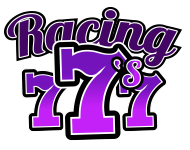
Racing 7s:
Before taking a full plunge into video, IGT had its “vision series” with a color LCD panel in the top box. Racing 7s featured red, white and blue 7s on a track. Each time a corresponding 7 would land on the payline in the main game, that color 7 would move a notch closer the finish line. To get an edge, you looked for a screen with 7s already close to the finish and a bonus payout.

Fort knox and buccaneer gold:
Silicon gaming, no longer in business, offered several games with banked bonuses.
On fort knox, if five numbers in a 10-digit code had already been solved through reel spins, you had an edge. Once the full code was solved, the vault would open for your bonus. In buccaneer gold, the object was to collect five daggers sticking in the ship’s rail. If there already were three or four daggers when you started, you had an edge.
S&H green stamps:
This was bally technologies’ entry into the banked bonus field. During play, you’d collect green stamps as they landed on the video reels. If you filled a book of 1,200 stamps, you’d go to a slots bonus event. The trick was to look for machines with 600 stamps or more already in the book. At that level, the player had an edge. In casinos with all new equipment, you won’t find these games. In casinos with older equipment, it’s possible. More important than the specific games is that you understand that if you ever see such a build-a-bonus, banked game, starting close to the finish improves your odds.

JACKPOT HUNTING
A number of players over the years have told me they beat the slots by looking for larger than usual progressive jackpots. It’s a method that works better on video poker where the house edge on the base game is smaller than on the slots. Slot payback percentages are low enough that even what looks like an oversized jackpot may not be enough to overcome the full house edge. Still, if you always wait to play a game until its jackpot is a certain size, you will be playing a game with a lower house edge than if you played for lesser amounts.
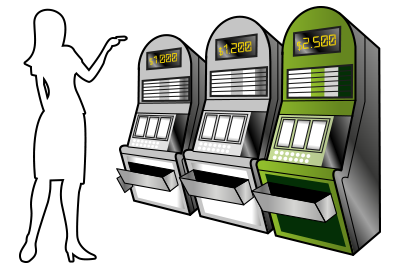
Here’s the method a jackpot-hunting player relayed to me:
- She starts by making daily rounds and charting jackpot amounts on different machines.
- Of the machines she tracks, she notes the payoff amount when someone wins the jackpot.
- Over many readings, she gets an idea of the average size of the jackpot when it hits.
- She then plays only when the jackpot reaches that average. For example, if the jackpot starts building from a $1,000 base and her chart of dozens of jackpots or more shows it hits at an average of about $2,500, then she starts playing the game only when the jackpot is $2,500 or more.

JACKPOT HUNTERS, BEWARE
If you’re going to play such games anyway, there’s no harm and some gain in delaying your play until the jackpot exceeds a targeted amount. However, profits are not guaranteed.
- Knowing the average size of the jackpot does not tell you the break-even point.
- There is no guarantee that you’ll be the one to hit the jackpot.
- Waiting for the jackpot to be a certain size does not increase your chances of winning the jackpot.
Let’s expand on that a little. Imagine a game where the jackpot usually hits at about $2.500. Unbeknown to you, the jackpot has to reach $5,000 before the game’s return reaches 100 percent. That means even if you start playing only when the jackpot is $2,500 or more, you still are playing a game on which the house has an edge. Waiting does ensure that when you do hit the jackpot, your average payout will be higher than if you started playing at the base level.
So if you’re jackpot hunting, good luck, but be aware there are pitfalls as well as big rewards.

SKILL-BASED BONUS EVENTS
Chapter 5, BONUS EVENTS, will deal more extensively with skill-based events. For now, understand that even though fully skill-based gaming has not yet launched in nevada, there are games with skill-based bonuses. Among those marketed in recent years are IGT’s centipede, where you play a version of the old arcade game in your bonus event, and GTECH’s zuma, based on the popular online game.
Though your skill makes a difference in these games, they are not beatable slots. Even if you’re a centipede grand master, the house still has an edge. With some variation by jurisdiction, a maximum of 4 percent of a game’s overall payout can be based on skill, and the house edge is high enough that getting the full 4 percent will not take you into profitable territory.

HOW TO WIN AT SLOTS - FAQ
Question 1: does the house gets an edge on slots by blocking winning combinations?
No. The house gets an edge by paying less than the true odds of winning on slots.
Question 2: on a mechanical slot with three reels and 10 symbols on each reel, how many possible three-reel combinations are there?
1,000 possible combinations.
Question 3: how many reel combinations are possible on modern slots with video reels or virtual reels?
Slots can be programmed with any number of slots on a virtual reel or video reel, so there can be as many reel combinations as the game designer needs.
Question 4: do identical-looking machines always have the same payback percentages?
No, identical-looking machines don’t always have the same payback percentage. You can’t tell a game’s odds by looking from the outside.
Question 5: do the slot payback percentages are “programmed” only in that the odds of the game are set to lead to a desired payback percentage?
Yes. Slot payback percentages are “programmed” only in that the odds of the game are set to lead to a desired payback percentage.
Question 6: does randomness mean all symbols must turn up on an equal portion of spins?
No. Results can be random while still setting the odds so some symbols occur more often than others.
Question 7: do long winning or losing streaks defy the odds of the games?
No. Long winning or losing streaks are part of normal probability.
Question 8: on most slots, is there an opportunity to overcome the house edge and be consistently profitable?
No. Most slots do not offer an opportunity to overcome the house edge and be consistently profitable.
Question 9: what is a “banked bonus”?
A banked bonus is an event in which you collect representations of coins or symbols until you have enough to trigger a bonus event.
Question 10: does waiting until a progressive jackpot reaches a certain size increase your chances of winning the jackpot?
No, until a progressive jackpot reaches a certain size does not increase your chances of winning the jackpot, but it increases your average payout when you win the jackpot.
How bingo slot machines work
To understand how, or even why bingo-based slot machines exist, it helps to have a quick background on native-american gambling.
Indian gaming regulatory act
The IGRA was signed into law in 1988 and established the framework for indian gaming. It gave the authority to tribes to conduct, license, and regulate gaming.
Class I, II, and III games
The IGRA created different classes of gambling. Class I refers to simple, traditional social games for small prizes and is not controlled by the IGRA.
Class II games are games of chance based on bingo and similar games, like pull-tabs or lotteries. Class II games are most attractive to NA casinos because they don’t require the tribe to enter into a state compact, nor does the tribe have to pay taxes on class II gaming revenue.
Finally, class III is a catch-all classification for games that don’t fall under class I or II classifications. It includes traditional casino-type games such as true slot machines, roulette, craps, etc.
Bingo-based slots
When you play a slot machine at a NA casino and there’s a bingo card somewhere on the screen, that’s a good indication you’re playing a class II machine instead of a true slot machine.
Whereas class III machines operate in a independent manner, class II machines are really just an elaborate display for the bingo games running in the background. When you hit the spin button, you enter into a game of bingo. Like real games of bingo, class II games require at least two players. If you’re at a small casino that’s not busy, the reels may spin for an abnormally long time while it waits for someone else to join the game.
And while each slot manufacturer may design their class II game slightly differently, they always involves the same bingo elements: multiple players attempting to match certain patterns on their cards compared to numbers centrally called.
Are bingo-based slots fair?
Native american casinos often get a lot of criticism for their self-regulating nature and lack of transparency, especially when compared to vegas casinos which are required to publish all sorts of information like payouts and revenue.
But the fact is bingo-based slots can actually be more transparent than their class III counterparts. Within class II machines’ paytable will be a list of all the winning bingo patterns and resulting pays. With a little bit of effort, you can actually calculate the odds of each pattern and win and combine them to create an “expected return” value which is equal to the game’s payout. Trying to figure out the payout on a traditional class III machine is impossible without running it through millions of spins.
Class II vs class III
Though what’s going on in the background varies between class II and III games, the player’s experience is basically the same. Both types of games have a specific payout associated with them. The bingo balls and cards generated by class II machines come from random number generators, just like class III machines.
So while some are suspicious of class II games and their operation, the end result is practically no different from any normal slot machine.
How video slots work
There are many myths and misconceptions when it comes to how video slots work. In fact we would go as far as to say they are in fact the most misunderstood of all of the casino games. In this section we present you with the facts and dispel the fiction.
Please note that the odds calculations below are just examples and in no way relate to a specific brand or machine. They are listed purely to illustrate the idea of how the odds are calculated.
Introduction
The first point to note is that all slot machines including video slots are a pure game of chance. There is nothing that you as a player can do to alter the outcome. The games are run by computer programs which ensure that over time the casino will always win. Of course over the short term you may win or lose.
There is so much misinformation regarding how they work that we deiced to give you the inside scoop straight from the inside of a major slot manufacturer. We hope that after reading this you have a better understanding of video slots.
How the combinations are decided
When you press the spin button the machine shows all the reels spinning, in reality the outcome has already been decided. The stop position and resulting symbols for each reel is randomly decided by the random number generator independently from the others. Once the reels stop spinning you can see the result, either a win or a loss.
How the odds work
Video slot machines can have anywhere from 20 to 100 symbols on each virtual reel. Of course the higher paying symbols will appear less than the lower paying ones.
For example if we have a game with 40 stops per reel and the jackpot symbol occurs only once per reel then the odds of hitting the highest prize is 1 in 102.4M.
As with most video slots you can play more than one line at a time so the example above would be 1 in 5,120,000 if you were playing 20 lines at once.
Through extensive mathematical testing the slot machine manufacturers can see how their reel placement will control the overall pay out percentage of the game.
About random outcomes
Every spin you make on a video slot is in no way related or effected by the last. Each spin has exactly the same odds of winning.
It is quite possible although unlikely that you could hit the top jackpot two spins in a row. For this reason it does not matter if you play a game that has just paid out or a game that has not paid out for a week.
Another point worth noting is that the symbols positions on the virtual reels never change. They a permanently placed to ensure the correct payout percentage.
There are a lot of systems for sale that claim to be able to beat slot machines. They are all useless, there is no way to predict or beat a randomly generated outcome.
Comparison of 3 reel slots and 5 reel slots
Three reel and five reel slots are quite different in several aspects. The most obvious is the difference in reel numbers and the spinning reel versus video screen format. Other major features that are different include the number of lines and the reel weighting.
Video slots do not need to use reel or symbol weighting as the odds can be determined by the amount of symbols on the reels. Three reel slots have a limited number of symbols per reel so they have to have weighted reels to have any chance of working for the casinos.
It is a very common misconception that spinning three reel slots have much better odds that video slots. This would be true if the reels were not weighted. In reality the odds are very close to the same when you compare a wide selection of games. In the end it really comes down to what entertains you the most. In our opinion video slot machines win this hands down.
How slot machines work
Aka, how a specific payback is achieved
Вђњmichael bluejay's comprehensive explanation of how slot machines work [is], in my opinion, the best one out there.Вђќ вђ”gaming the odds
NOTES:
(1) this page covers normal slot machines (aka "class III"). Many native american casinos instead use "class II" slots based on bingo or the lottery because local laws don't allow regular slots. Class II machines look pretty much the same on the outside as regular slots, and you still get a random result, the machine just arrives at that random result a bit differently from what's described below.
(2) this page covers traditional slot machines. The new skill-based slots are covered on a separate page.
No popups, no download, no registration, no B.S., just the game. One click and you're in.
Slots are random
Before you see how slots work, you simply have to understand that the outcome of each spin is random. This is a pretty easy concept, but many people just refuse to believe it. If you're not convinced that slots are random, then see my article on how slot machines are random first, then come back here. Don't worry, I'll wait.
Picking the symbols
On a slot machine, a random number generator (RNG) picks a random number for each reel, which each number matching a stop on its reel. Then the machine directs the reels to stop on the spots selected by the RNG.

Note that by the time the reels are spinning, the game is already over. The RNG has already selected the stops, and the reels spin sort of as a courtesy to the player. Slot machines don't even need visible reelsвђ”you could just put your money in and the machine could tell you whether you how much (if any) you won. Wrap your head around that one for a minute. The presence of the visible reels makes no difference in the gameвђ”they're just there to show you what the computer already picked.
How the stops are selected
A typical non-progressive video slot has dozens of stops per reel. An electro-mechanical slot uses an (invisible) "virtual reel" of 64 to 256 stops, which are mapped to the 22 stops on the physical reel. The physical reel isn't big enough to hold all the stops that are needed, so it's the big one that's used in the computer program. (example source)
If you saw a worker open up an electro-mechanical slot machine you might see a reel like the one on the right, if it were unfolded. There are various symbols spread across 22 stops. Yes, the blanks count as stops. You might think that since there are 11 blanks you have a 50% chance of hitting one, and since there's only one jackpot symbol you have a 1-in-22 chance of getting it. But it doesn't work that way, because we're not really working with a 22-stop reel. We're really working with an invisible reel of like 128 or so stops, controlled by the computer. The computer will pick a number from 1-128, each of which is mapped to a specific symbol. Here's a hypothetical map for the reel shown at right:
Selected number symbol picked total no.
Of symbols 1-73 blank 73 74-78 cherry 5 79-94 bar 16 95-107 double bar 13 108-118 triple bar 11 119-126 red 7 8 127-128 jackpot 2
Say the computer picks #53. That's a blank, and it tells the reel to stop on a blank. If it picks #75, then it tells the reel to stop on a cherry. If it picks #127, then the reel tops on the jackpot symbol.
Most of the numbers are for the lower-paying symbols, so that's what's more likely to get chosen. That's what we mean when we say the reel is weighted. Some symbols are more likely to be chosen than others, even if they appear the same number of times on the physical reel.
So you don't really have a 1 in 22 chance of hitting the jackpot symbol on this reel. Your odds are actually 2 in 128, or 1 in 64.
And of course, the most likely symbol is a blank. On our sample machine, you have a 73 in 128 chance (57%) of drawing one of those.
Speaking of blanks, when the computer picks a blank, it actually picks a specific blank. Same for the other symbols that appear on the reel multiple times, like cherries and certain bars. The table above was simplified to make things easier to understand, but now that we've come this far, let's now look at how every single position on the reel might be weighted.
number
of chances
The fourth column (number of chances) shows the weighting. We've got a 2 in 128 chance of landing on the first stop (a cherry), and an 8 in 127 chance of hitting stop #5, the red 7. Notice how the blanks surrounding the jackpot symbol, #20 and #22, are heavily weighted. They're more likely to be selected, resulting in the "near-miss" effect. You think you just almost got the jackpot symbol, but it's really an illusion. You weren't close at all. It's like the blanks above and below the jackpot have little magnets on them.
So far we've talked about only one reel, though most slots have three or five, and each reel is actually weighted differently. As you go from reel to reel the weighting gets heavier, so you're more likely to hit higher paying symbols early on. By the third reel the higher-paying symbols are even less likely. This results in another kind of near-miss effect: how many times have you gotten JACKPOT, then another JACKPOT, and then. A blank? After the first two hits you're holding your breath for the third reel, but in reality your odds are poorer for getting that third jackpot symbol than they were for getting either of the first two symbols. However, for the rest of this discussion, we're going to assume that each reel is in fact identical in order to make the math easier.
Hitting the jackpot
So now that we know the weighting of the reels, we can answer that elusive question: what are the odds of hitting the jackpot? Here's the answer. Assuming we have three identical reels as listed above, then the odds of getting the jackpot symbol on any reel is 2/128. The probability of hitting the jackpot on all three reels is 2/128 x 2/128 x 2/128 = 1 in 262,144. (if you played fast at 800 spins for 8 hours a day, you'd hit the jackpot on average once every 41 days.) this in fact is the odds of hitting the jackpot on red white & blue. (see more on jackpot odds.)
Calculating the payback
Now that we know the weighting of the reels, we can calculate the payback for this machine, which the percentage of money the machine would pay back over an infinite number of spins. Of course you can't play for an infinite amount of time, but the point is, the longer you play, the closer your return will come to what the payback suggests.
Our slot has the following paytable.
| Bluejay bonanza slot machine paytable | |
| symbols | payout |
| jackpot (3 JP symbols) | 1666 |
| 7 7 7 | 300 |
| оћ оћ оћ | 100 |
| = = = | 50 |
| вђ” вђ” вђ” | 25 |
| 3 of any bar | 12 |
| 3 cherries | 12 |
| 2 cherries | 6 |
| 1 cherry | 3 |
To find the payback of the machine, we multiply the probability of each winning hit times the payout for that hit, then add them all up, as shown in the following table. I included a "how calculated" column if you're interested in seeing how I derived the probabilities. The numbers I use there came from the first table, above ("total no. Of symbols" column).
| Bluejay bonanza slot machine | ||||
| symbols | probability | how calculated | payout | prob. X payout |
| jackpot (3 JP symbols) | 0.000004 | 2/128 x 2/128 x 2/128 | 1666 | 0.7% |
| 7 7 7 | 0.000244 | 8/128 x 8/128 x 8/128 | 300 | 7.3% |
| оћ оћ оћ | 0.000635 | 11/128 x 11/128 x 11/128 | 100 | 6.4% |
| = = = | 0.001048 | 13/128 x 13/128 x 13/128 | 50 | 5.2% |
| вђ” вђ” вђ” | 0.001953 | 16/128 x 16/128 x 16/128 | 25 | 4.9% |
| 3 of any bar | 0.030518 | (16+13+11)/128 x (16+13+11)/128 x (16+13+11)/128 | 12 | 36.6% |
| 3 cherries | 0.000060 | 5/128 x 5/128 x 5/128 | 12 | 0.1% |
| 2 cherries | 0.004399 | ((5/128)x(5/128)x(128-5)/128)x3 (prob. 1st reel x prob. 2nd reel x prob. NOT 3rd reel; then multiply all by 3, to account for the 2 cherries appearing in any of 3 different positions -- 1,2 or 2,3 or 1,3) | 6 | 2.6% |
| 1 cherry | 0.108211 | (5/128x(128-5)/128x(128-5)/128)*3 prob. 1st reel x prob. NOT 2nd reel x prob. NOT 3rd reel; then multiply all by 3, to account for our single cherry appearing on any one of the three reels | 3 | 32.5% |
No comments:
Post a Comment